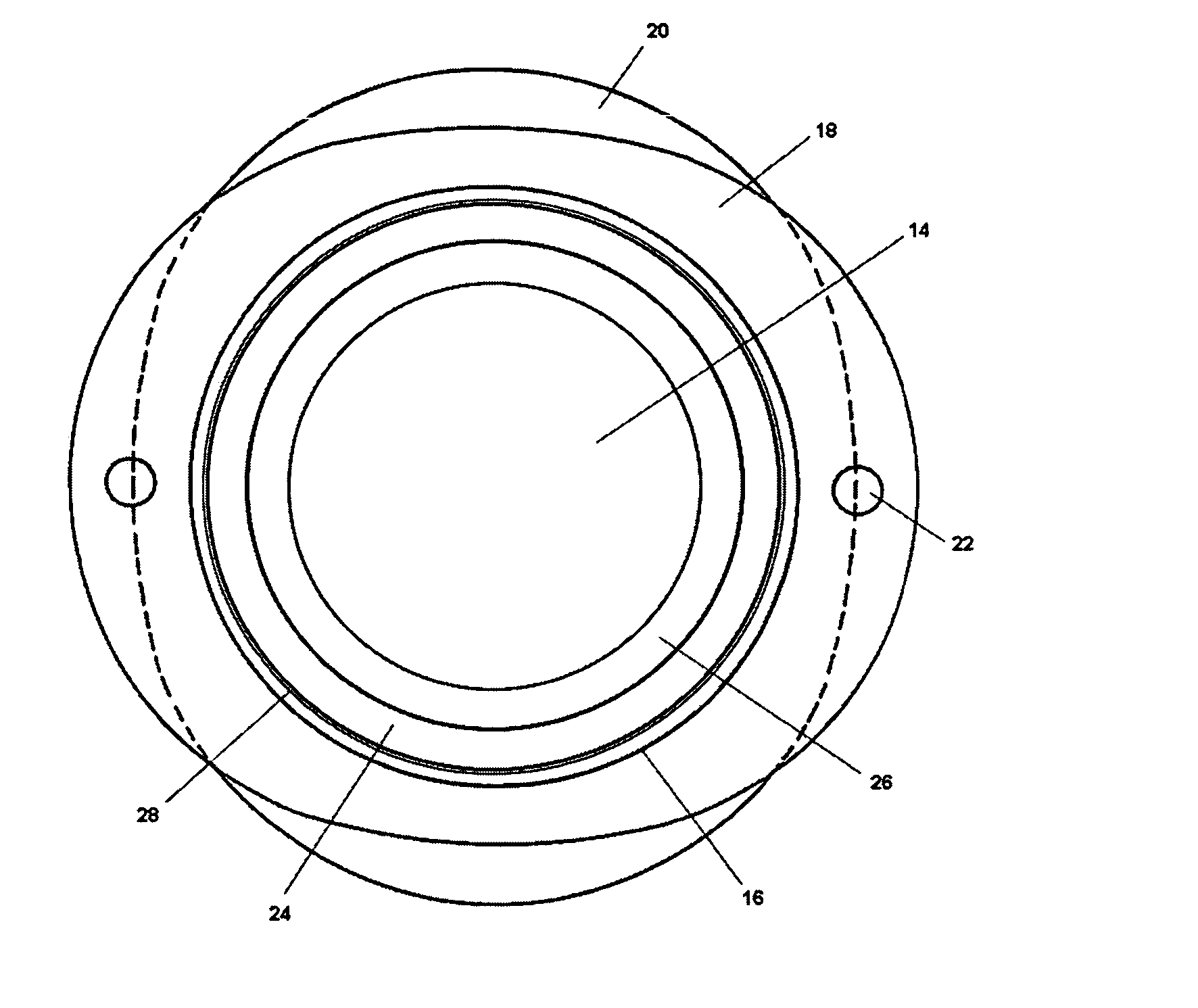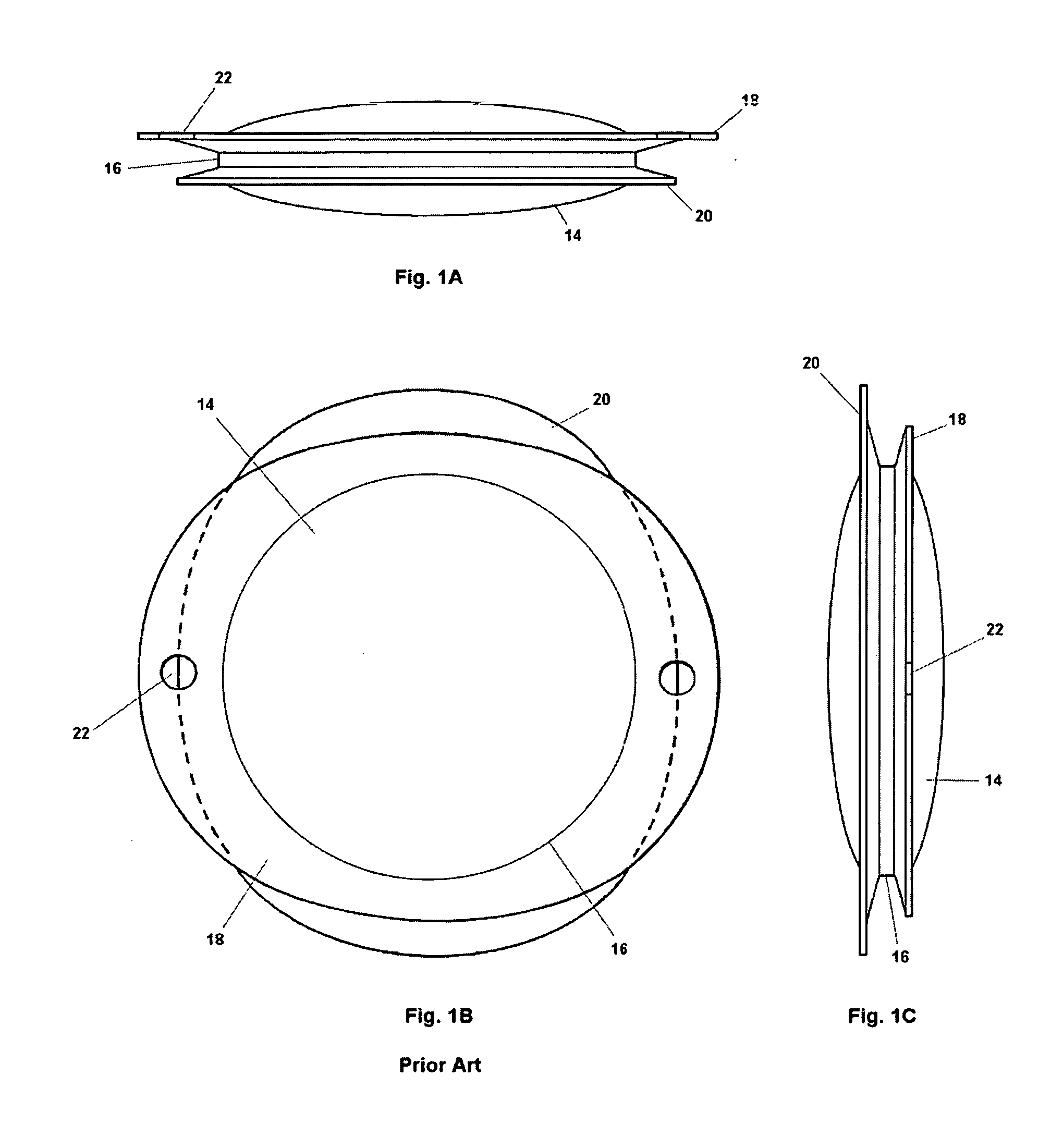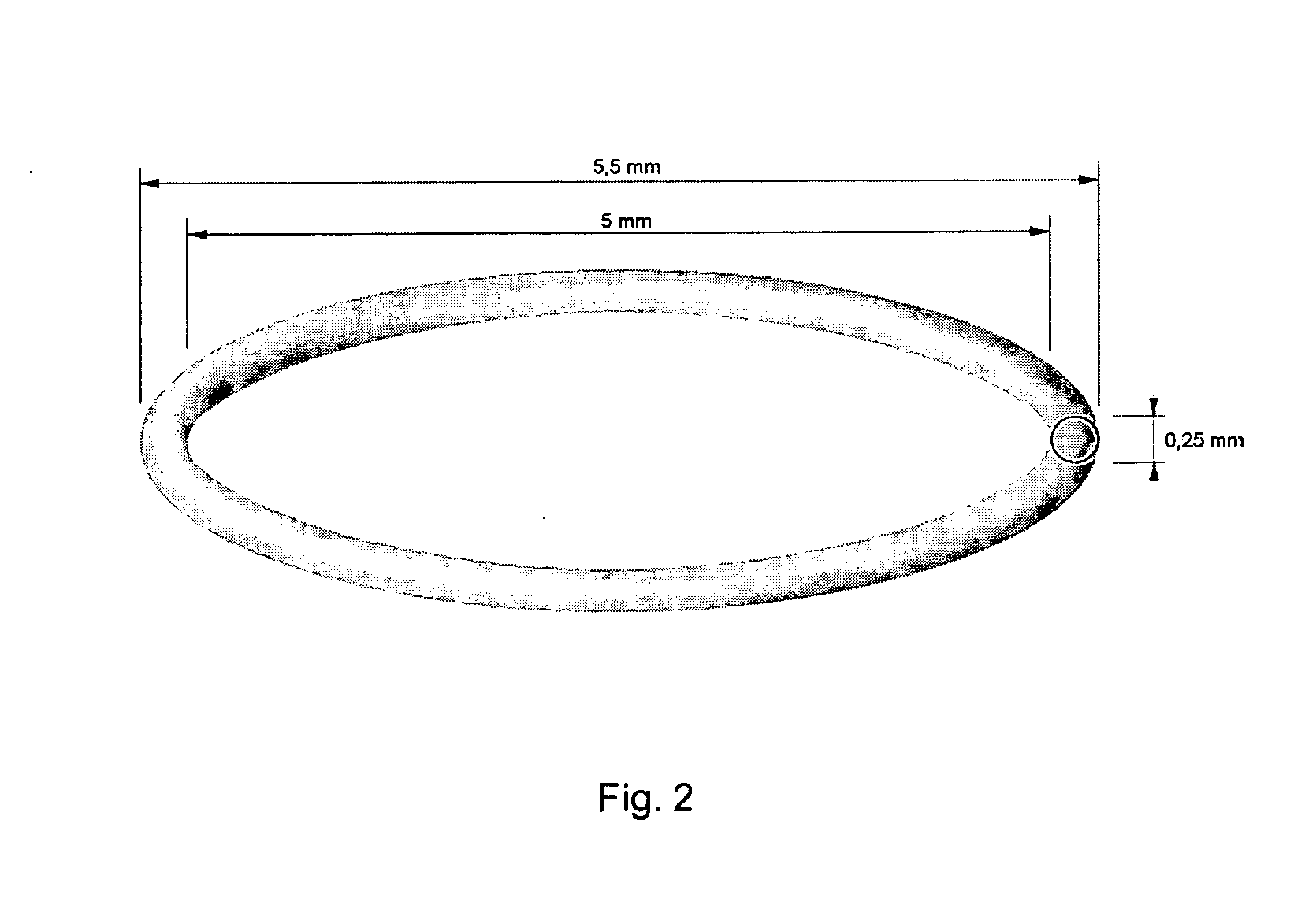Bag-in-the-lens intraocular lens with removable optic and capsular accommodation ring
a technology of intraocular lens and lens ring, which is applied in the field of bag-in-the-lens intraocular lens with removable optics and capsular accommodation rings, can solve the problems of cellular deposits, risk of cellular deposits between parts, and complex design, and achieves convenient manufacture and production. , the internal diameter is precise, and the design construction is versatil
- Summary
- Abstract
- Description
- Claims
- Application Information
AI Technical Summary
Problems solved by technology
Method used
Image
Examples
Embodiment Construction
[0047]FIG. 1 A, B, C shows the preferred embodiment of the prior art. This preferred embodiment could be slightly adapted by introducing a posterior angulation 30 of the external flanges of the haptic device. This is done in order to prevent capture of the iris into the groove immediately postoperatively. The posterior angulation will optimally vary from 5 degrees to 10 degrees. Other angulations are possible.
[0048]FIG. 2 shows the preferred embodiment of the ring caliper that permits a precise sizing and centration of the anterior capsulorhexis. This ring caliper may be constructed of any biomaterial allowing its insertion within the eye in a folded condition after which it will unfold in the eye to its original shape because of its material memory. The diameter of the cross section of this ring is optimally 0.25 mm but can be made thinner or thicker depending on the biomaterial used. It can be transparent or coloured to enhance visibility once put in place in the eye. When used i...
PUM
 Login to View More
Login to View More Abstract
Description
Claims
Application Information
 Login to View More
Login to View More - R&D
- Intellectual Property
- Life Sciences
- Materials
- Tech Scout
- Unparalleled Data Quality
- Higher Quality Content
- 60% Fewer Hallucinations
Browse by: Latest US Patents, China's latest patents, Technical Efficacy Thesaurus, Application Domain, Technology Topic, Popular Technical Reports.
© 2025 PatSnap. All rights reserved.Legal|Privacy policy|Modern Slavery Act Transparency Statement|Sitemap|About US| Contact US: help@patsnap.com



